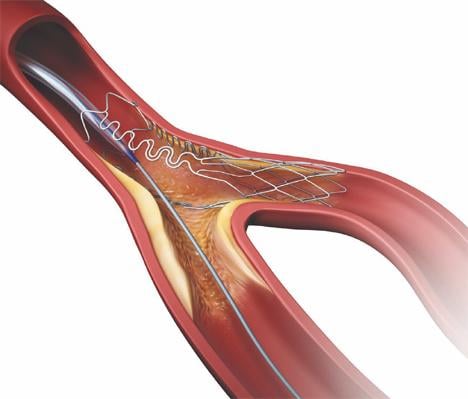
Bare metal stents (BMS) were introduced in 1994 as an improvement over balloon angioplasty alone, which had a high restenosis rate of between 30-40 percent. The cobalt-chromium or stainless steel stents helped reduce restenosis, bringing rates down to about 15-20 percent, but BMS also increased the risk of early in-stent thrombosis shortly following the procedure.
September 18, 2009 ¬– Abbott has announced the company's schedule of key news announcements and events during the Transcatheter Cardiovascular Therapeutics (TCT) 2009 conference in San Francisco, Sept. 21-25.
September 17, 2009 – NMT Medical Inc. said yesterday it will commence data analysis for its landmark STARFlex patent foramen ovale (PFO)/stroke and transient ischemic attack (TIA) clinical trial, CLOSURE I, in April 2010 instead of its originally scheduled fall 2010, so it can accelerate its pre-market approval (PMA) submission to the FDA.
Providing exceptional cardiovascular care for patients to achieve the best possible outcomes is the number one goal for ...
September 17, 2009 – Boston Scientific Corp. announced its schedule of the company's major events and press announcements at the Cardiovascular Research Foundation's (CRF) 21st annual Transcatheter Cardiovascular Therapeutics (TCT) scientific symposium, Sept. 21-25, in San Francisco.
September 17, 2009 – The 13th Annual Scientific Meeting of the Heart Failure Society of America (HFSA) on Wednesday featured four late breaking clinical trials.
September 17, 2009 – Elixir Medical Corp. said today its stent systems using bioabsorbable polymers will be featured in multiple sessions at the 21st annual Transcatheter Cardiovascular Therapeutics scientific symposium (TCT 2009), Sept. 21-25, in San Francisco.
Cardiac positron emission tomography (PET) is growing in popularity among cardiologists because it provides the ability ...
September 17, 2009 – One of the activities at TCT 2009 is the Hearts in Hand Collection, a library of physical heart models in a variety of structural disease states, which allow physicians to gain quick and thorough understanding of spatial relationships and practice catheter pathways and device sizing prior to conducting minimally invasive interventions.

According to the American Heart Association (AHA), arrhythmias afflict more than 4 million patients and results in approximately half a million deaths each year in the United States. Electrocardiography (ECG) measurements, which record and interpret cardiac electrical activity over time, are widely used to detect abnormal heart rhythms.
A 55-year-old woman with a history of heavy alcohol use, hepatitis C induced cirrhosis, hypertension, and chronic renal insufficiency presented at Massachusetts General Hospital in Boston Mass., with nine months of increasing intermittent substernal chest pressure. The pain was inducible by exertion, was nonradiating, and when present associated with shortness of breath, and diaphoresis.
When performing radiofrequency (RF) ablation to treat cardiac arrhythmia, medical professionals must balance the safety ...

In August Daiichi Sankyo and Eli Lilly and Company launched U.S. sales of Effient (prasugrel), a new antiplatelet medication to prevent stent thrombosis, which clinical studies show to be more effective and better tolerated than Plavix (clopidogrel).

Ruptured vulnerable plaque (VP) is blamed for the majority of acute myocardial infarctions and many strokes, but there is extensive debate over which modalities are best suited to detect these plaques, and there is as of yet no conclusive way to determine which of these plaques will rupture.

Stenting of lesions at coronary vessel bifurcations is one of the most challenging percutaneous interventions, along with a high risk of procedural complications and restenosis. Several companies are developing specialized bifurcation stents to help make the job easier. Currently there are no dedicated bifurcation stents with FDA clearance.
Change Healthcare Cardiology Hemodynamics is an integrated hemodynamic monitoring system for monitoring vital signs and ...
September 17, 2009 - Inflation rates for healthcare supplies are projected to remain unchanged through 2010, according to an analysis released by the Premier healthcare alliance.

Over the past year several new drug-eluting stents (DES) stents have been released and SYNTAX trial data proved DES compare as well as coronary artery bypass graft surgery (CABG) in patient outcomes. DES vs. CABG

Metal stents are foreign objects that can irritate vessels and cause stent thrombosis, prevent vessel remodeling, prevent future surgical interventions, can fatique and suffer strut fractures, and impair CT or MR imaging. For these reasons several stent manufacturers are working on biodegradeble stents that do not leave behind any hardware.

 September 17, 2009
September 17, 2009








